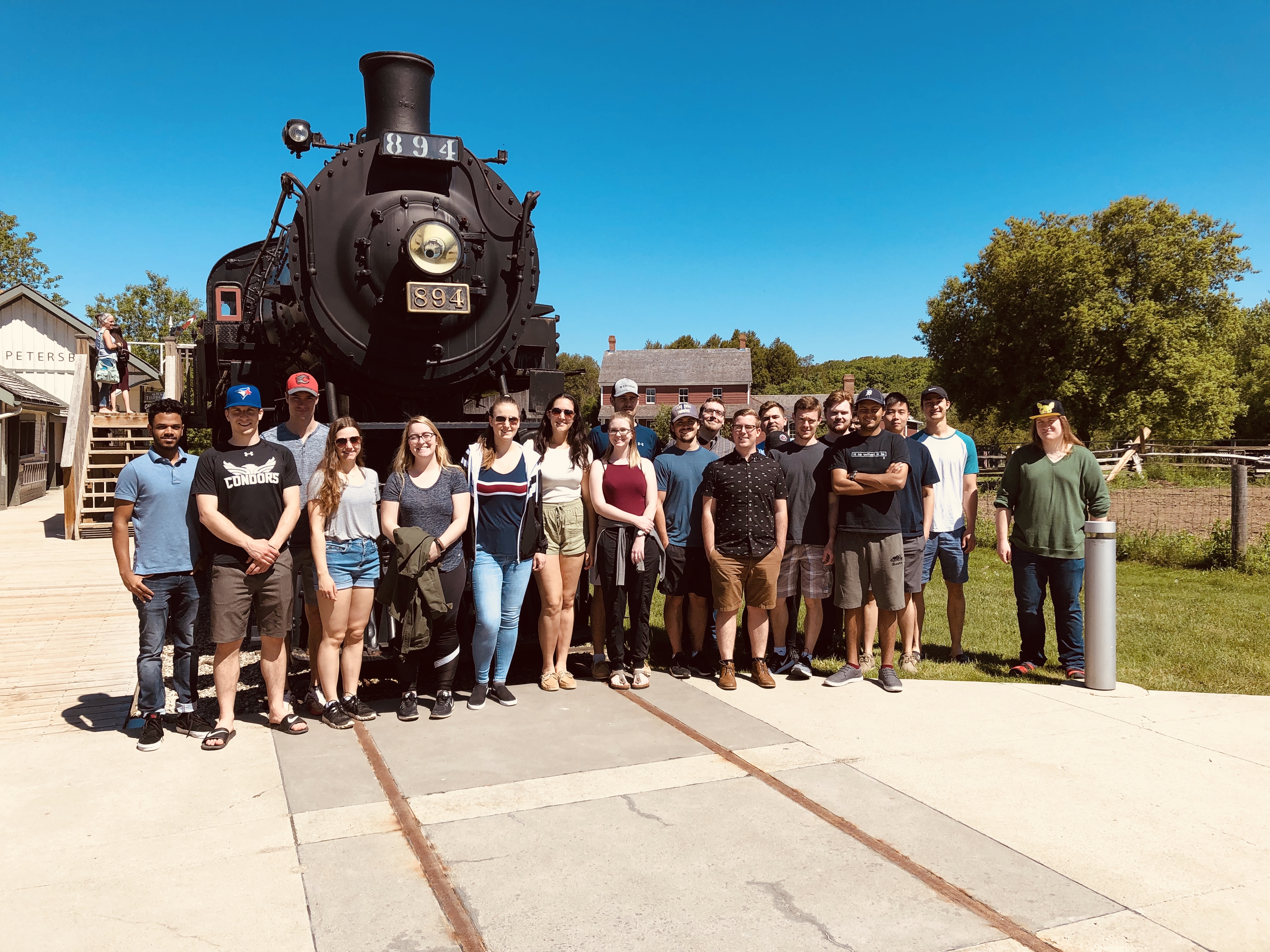Fourth-year students in Conestoga’s Bachelor of Applied Technology - Architecture - Project and Facility Management (APFM) program visited the Ken Seiling Waterloo Region Museum on June 7 for a behind-the-scenes look at the museum’s preservation and conservation practices.

APFM students explored the value of heritage conservation at the Ken Seiling Waterloo Region Museum on June 7.
The tour was part of the program’s Heritage Conservation course, which includes a broad range of cultural heritage components, including individual and group heritage, buildings, landscapes, and archeological sites, to develop awareness of conservation and its role in modern society through the economic, social and environmental benefits it provides to communities.
“We investigate the fundamentals of heritage conservation to create an appreciation,” said faculty member Ron Bean. “Graduates of the program could work in a variety of roles in the industry and on projects related to buildings, some with heritage value. Understanding that value and the various methods to conservation will play an important role as to how they approach those projects.”
During the tour, students met with Stacy McLennan, collections curator and registrar, and conservator Roberta Sealy to learn how the museum preserves its collection of more than 43,000 objects.
“Less than five per cent of the collection is on display at any given time,” said McLennan. “The rest is safely housed in environmentally controlled storage rooms in the Curatorial Centre.” The museum collects, preserves and shares places, artifacts and stories of cultural significance to Waterloo Region, ranging from objects used by early inhabitants of the area to modern day pieces that speak to the region’s technology cluster.
“The museum prioritizes preventative conservation,” said Sealy. “That includes measures put in place to manage pests, like moths eating textiles; ensure proper storage, such as avoiding ultraviolet radiation from the sun that could cause dyes to fade; and control the environment to stabilize objects that could be damaged by fluctuating relative humidity, like metal corrosion or the embrittlement of leather.”
For graduates of the program, understanding how some of these measures affect the architectural process enhances their skill set and discipline-specific knowledge, and will aid as they take on projects that could include, for example, deciding whether or not to install ultraviolet filters on windows.
Before departing at the end of the tour, Sealy offered some insight into the value heritage conservation has on modern society. “It ties people together by creating a sense of community, as well as inclusive environments and safe spaces. It also helps us move forward as a society -- when we don’t preserve the past, it changes our perspective of history and therefore, the changes we need to make for the future.”
The Ken Seiling Waterloo Region Museum is the largest community museum in Ontario with two indoor galleries and a 60 acre living history exhibit called Doon Heritage Village. Opened in 1995, the Curatorial Centre is the museum’s hub for collection management and includes artifact receiving, registration and storage rooms, as well as conservation labs and an exhibit design studio and fabrication workshop.
Accredited by the International Facility Management Association, Conestoga’s unique four-year APFM co-op degree program focuses on the entire architectural process from the planning phase through to occupancy and the adaptive re-use of buildings. Students gain strong foundations in architecture, construction, basic engineering and business; insight into project and facility management; and have additional exposure to liberal arts disciplines and practical applications for the business enterprise.
